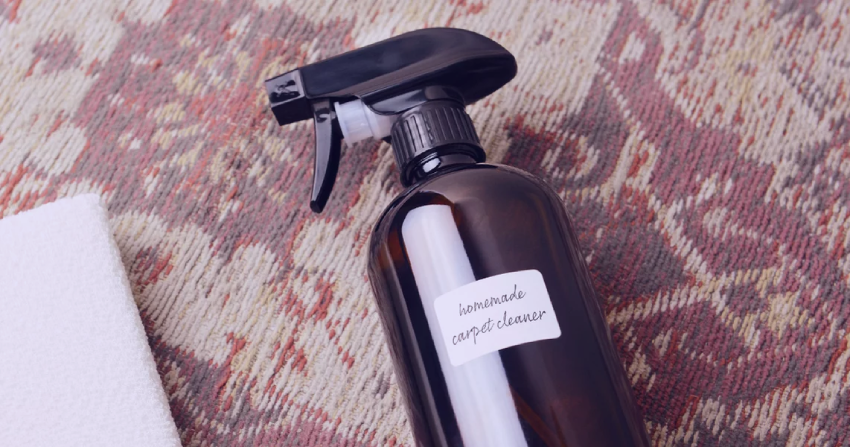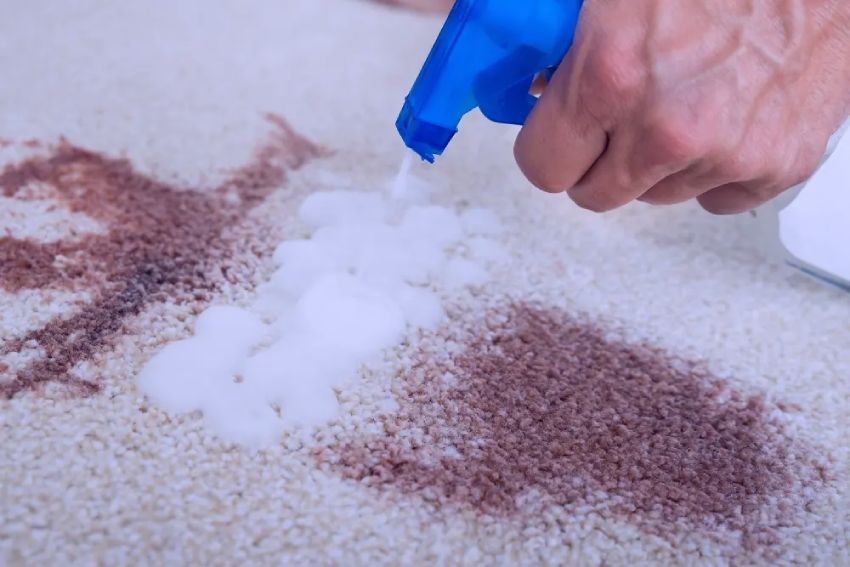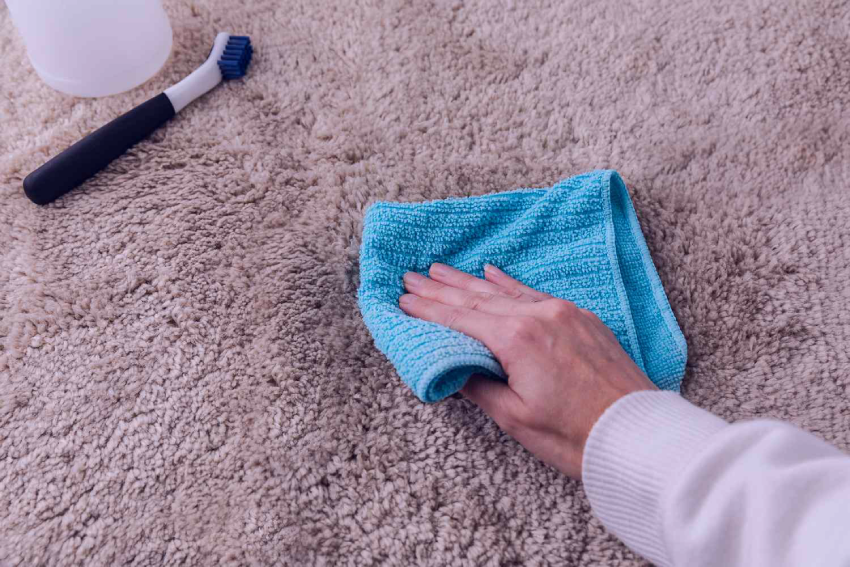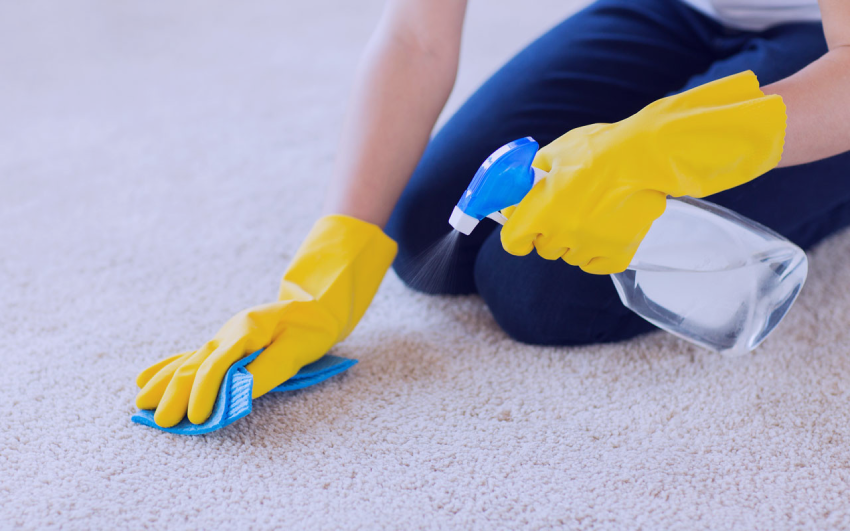Preparing and Applying Homemade Carpet Shampoo
Master the application of homemade carpet cleaner by thoughtfully preparing for your cleaning session. It’s also essential to know how to apply your homemade carpet shampoo to achieve the best results possible.
Gathering the Necessary Supplies
To spin your own homemade carpet cleaning magic, you’ll need a few essential items. Aside from the DIY shampoo ingredients, get your hands on a quality carpet cleaning machine (like Bissell), a scrubbing tool, gloves, and a bucket.
Basic household ingredients like vinegar, baking soda, dish soap, and borax are often the all-stars of DIY carpet cleaning solutions.
Mixing and Diluting the Carpet Shampoo
By lining up your ingredients—be it vinegar, dish soap, or essential oils, you need to follow a proper ratio to ensure the efficacy of your concoction.
Dilution is by far the most important step in preparing your homemade carpet cleaner. Mix too much water and your solution weakens, too little and you risk damage to your carpet. Always adhere to a 1:10 cleaner-to-water ratio to ensure the perfect consistency.
Applying the Homemade Carpet Shampoo
The art of application begins with a pre-spray. Evenly distribute your homemade carpet shampoo across the surface using a spray bottle. Make sure to cover all areas starting from the corners.
For a deep clean, it’s essential to penetrate the carpet fibers. Using your homemade carpet shampoo for machines, fill the clean water tank, ensure a specific setting for a deep clean, and start in a far corner to avoid retracing your steps.
Post-application involves two crucial steps. First, let the carpet dry thoroughly before you tread on it, and secondly, vacuum to eliminate any residue.



